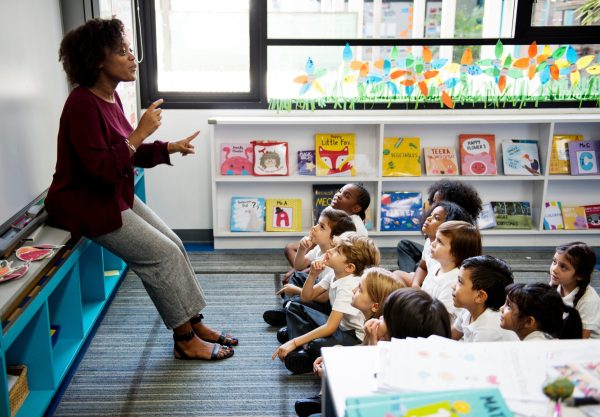When Dr. Deborah Bergeron, Deputy Director of Community Engagement Innovation at the National Head Start Association, was a high school principal, she saw potential early learning professionals in many of her students — and she often encouraged them to pursue Child Development Associate (CDA) certificates.
“I think it has the potential to do so many good things in high school — not just promote early childhood, but also promote responsible teenager behavior and give them some meaning and vision in their life about who they can be,” she said. “If you sign 10 teenagers up for the CDA and only two of them end up going into early childhood, all 10 of them will be better parents. It won’t matter if they don’t all go into early childhood. They’ll all get better parenting skills.”
But for many, the question isn’t whether or not enough childcare workers and early learning teachers are readily available — it’s whether or not those programs are even accessible.
The state in which a preschooler lives largely determines the availability and quality of that child’s early learning options. In its State of Preschool 2023 Yearbook, the National Institute for Early Education Research (NIEER) looked at what changed between 2022 and 2023: “The states have emerged, albeit unevenly, from the worst of the Covid-19 pandemic, and are poised to make progress toward more effective and equitable preschool policies.”
Albeit unevenly.
While 44 states did show increases in early learning program enrollment from 2022 to 2023, six others (Idaho, Montana, Wyoming, Indiana, New Hampshire and South Dakota) did not. This adds up to about 218,000 four-year-olds, according to the U.S. Census Bureau’s American Community Survey (ACS) 5-year estimates for 2019. In addition, Alaska, Arizona, Utah, Hawaii, Missouri, North Dakota and Guam all saw such small increases, they feel a bit like underperformance, given that:
- New program funding outsized actual program enrollment
- Post-Covid preschool initiatives seem likely to boost overall enrollment
- The population of four-year-olds in the United States has not increased
Meanwhile, pet sitters are making more money than pre-K educators.
The U.S. Labor Bureau lists the median hourly pay of early childhood professionals in the United States at $14.60. At the same time, an animal caretaker — perhaps a dog walker or pet sitter — earns an average of $15.31 per hour. We all love our pets, but there’s no question that this indicates a crisis for our youngest learners, not to mention their teachers.
“We really need to make sure that we are fully advocating with our elected officials, both at the state and congressional level,” said Edward Manuszak, Ph.D., founding co-chair of the Early Learning Cohort of AASA, The School Superintendents Association. “If we want high-quality early child experiences for the children in our country, we really need to make sure that these individuals are honored for the contributions that they make.”
Preschool teachers do so much more than just teach children the basics. That is where early learners develop the social and emotional skills they’ll need to thrive in elementary school, says National Association of Elementary School Principals (NAESP) Early Learning Leadership Fellow Julie Bless, formerly a principal in Oklahoma.
“I always met with my kindergarten teachers,” she said. “Kindergarten teachers talk to first graders. And you want to know, well, ‘What do you need to know by the end of the year? What do you need to know going into the next grade?’ And so it’s really important that pre-K is the foundation — of a public school, of a private school, of a charter school. What do those students need? Well, they need to love school.”
Bless often reminded herself of something she read in a book Kids Deserve It, which hones in on this notion. “Do what’s best for kids. Do what’s best for students. If all of your decisions are based upon what’s best for your students — not what’s best for parents, what’s best for the adults, what’s best for the teaching staff — but if you do what’s best for your students, then you’re going to be fine. You’re going to do what’s best.”



